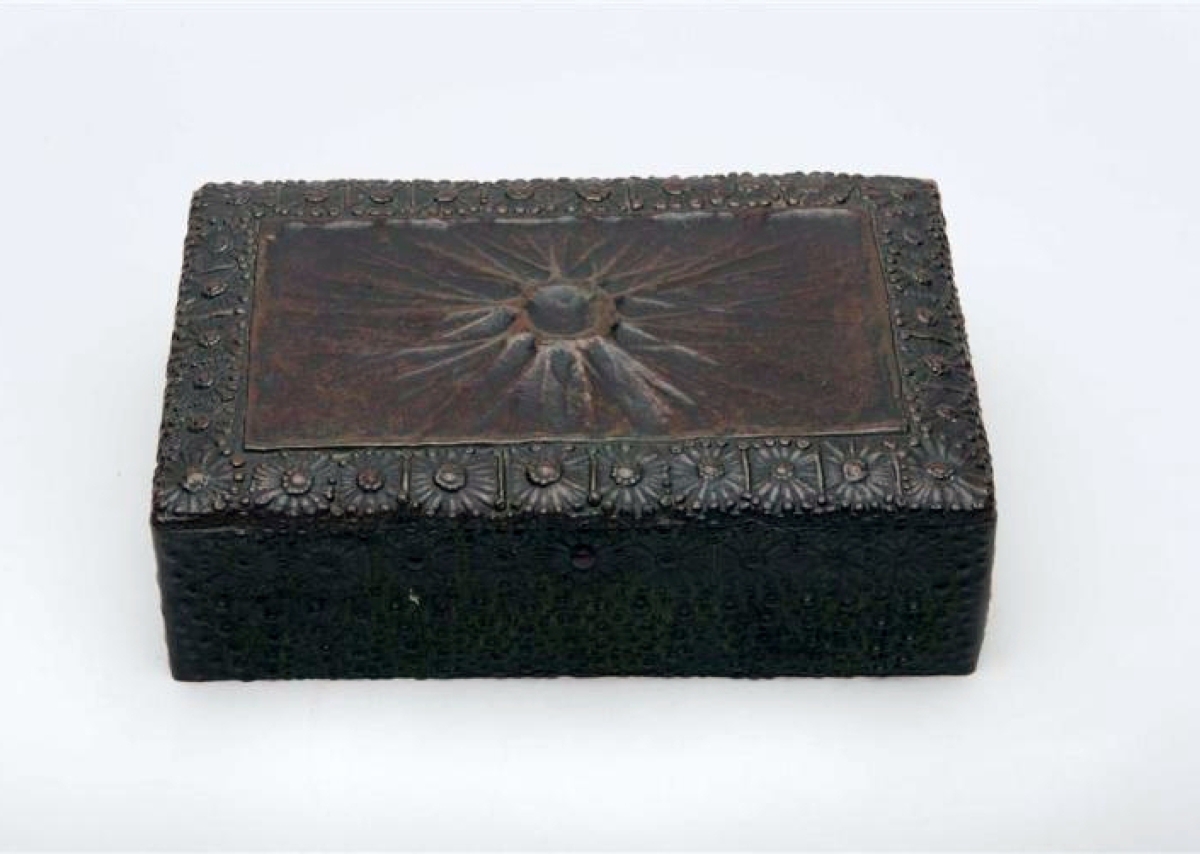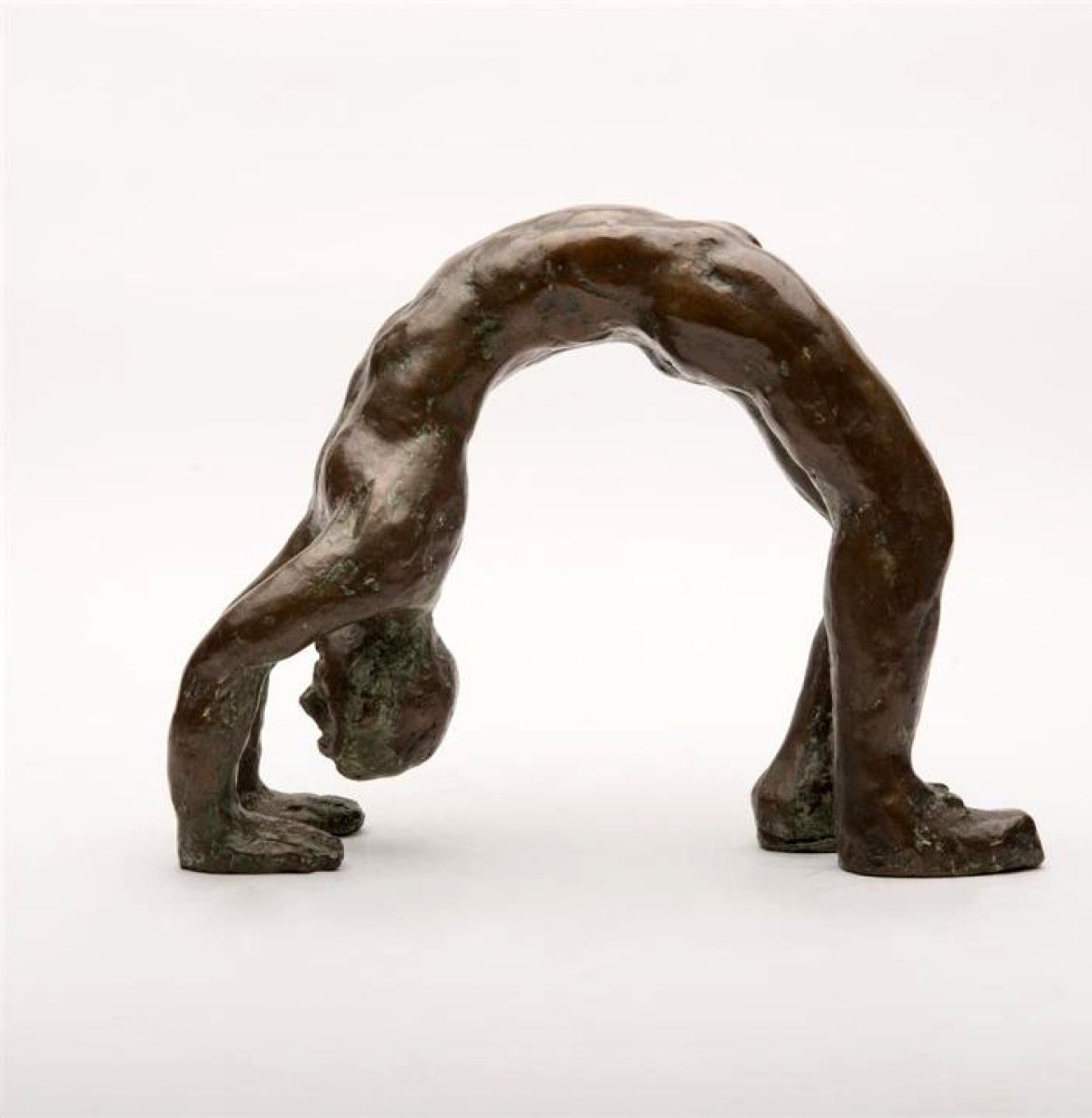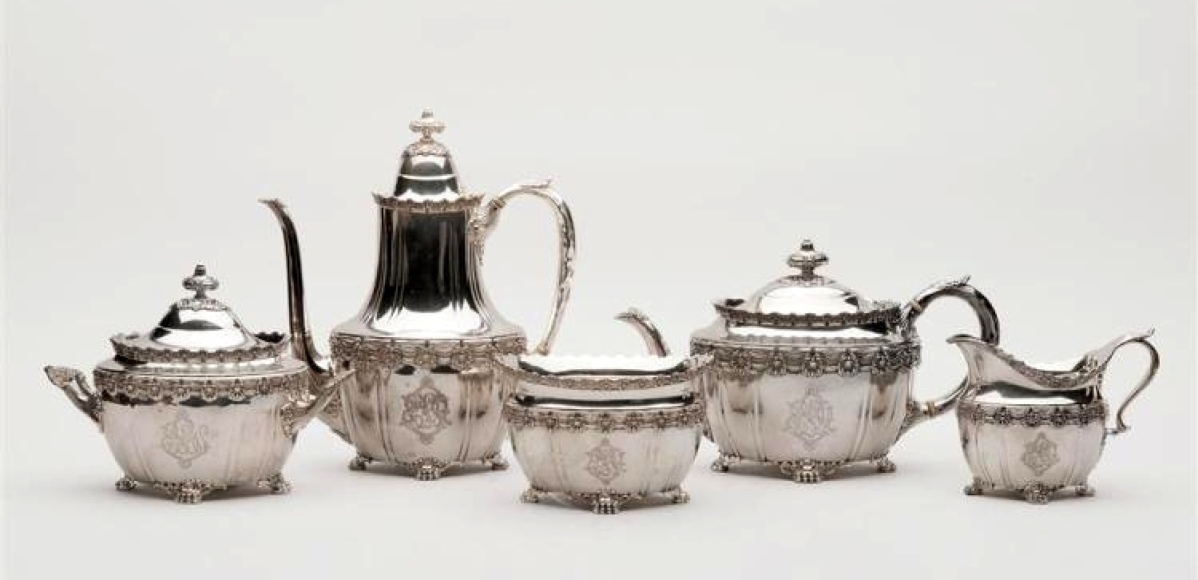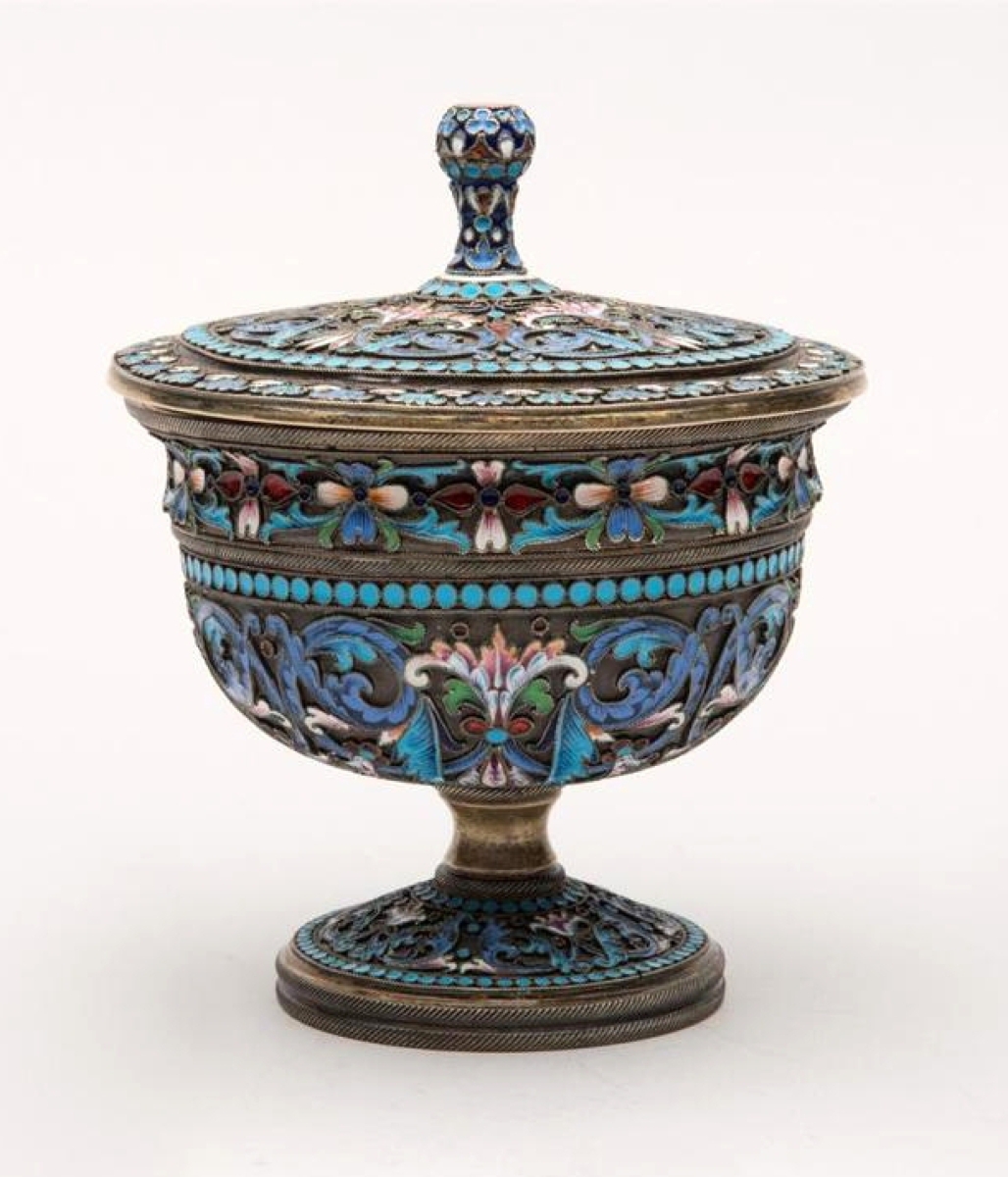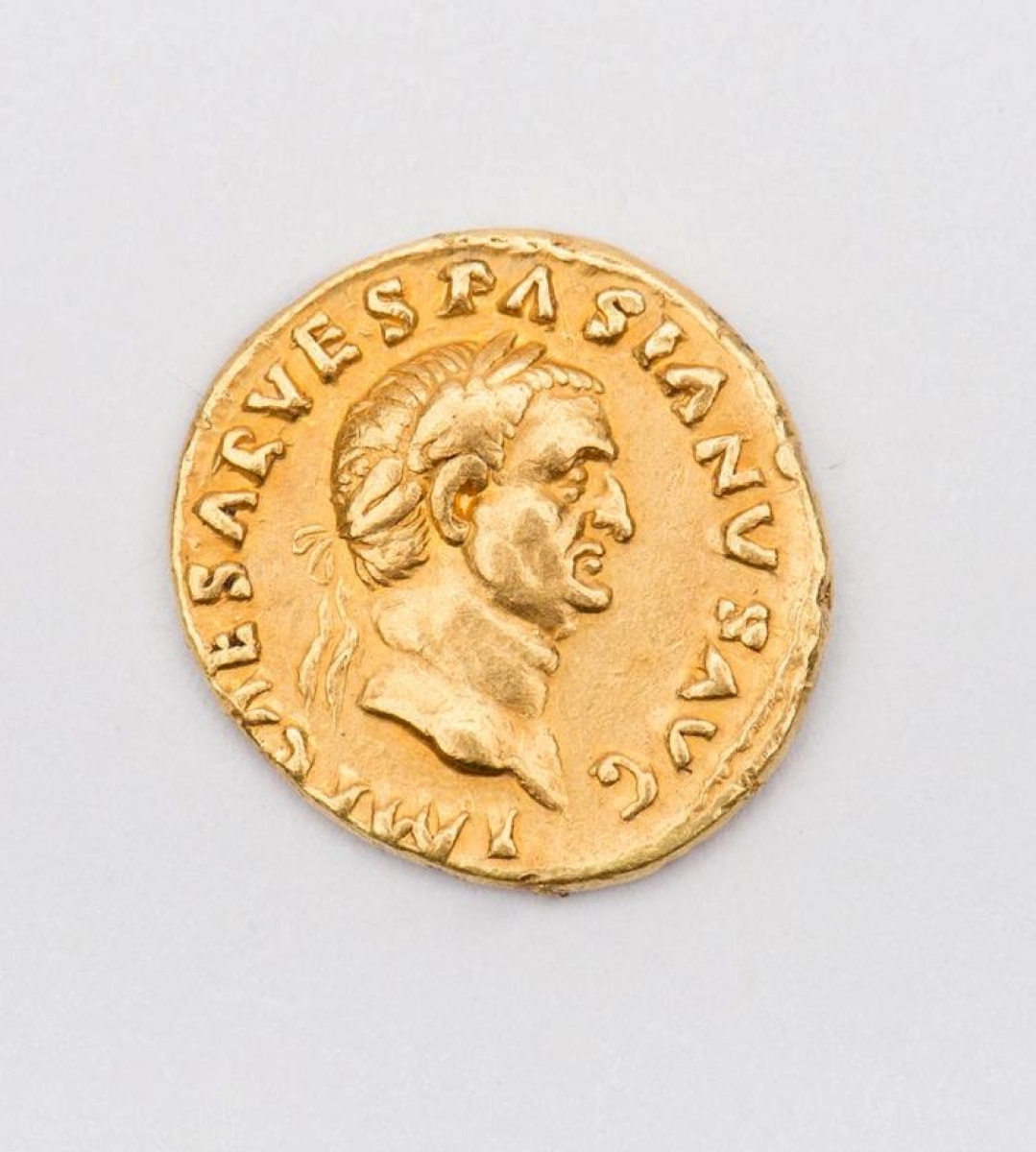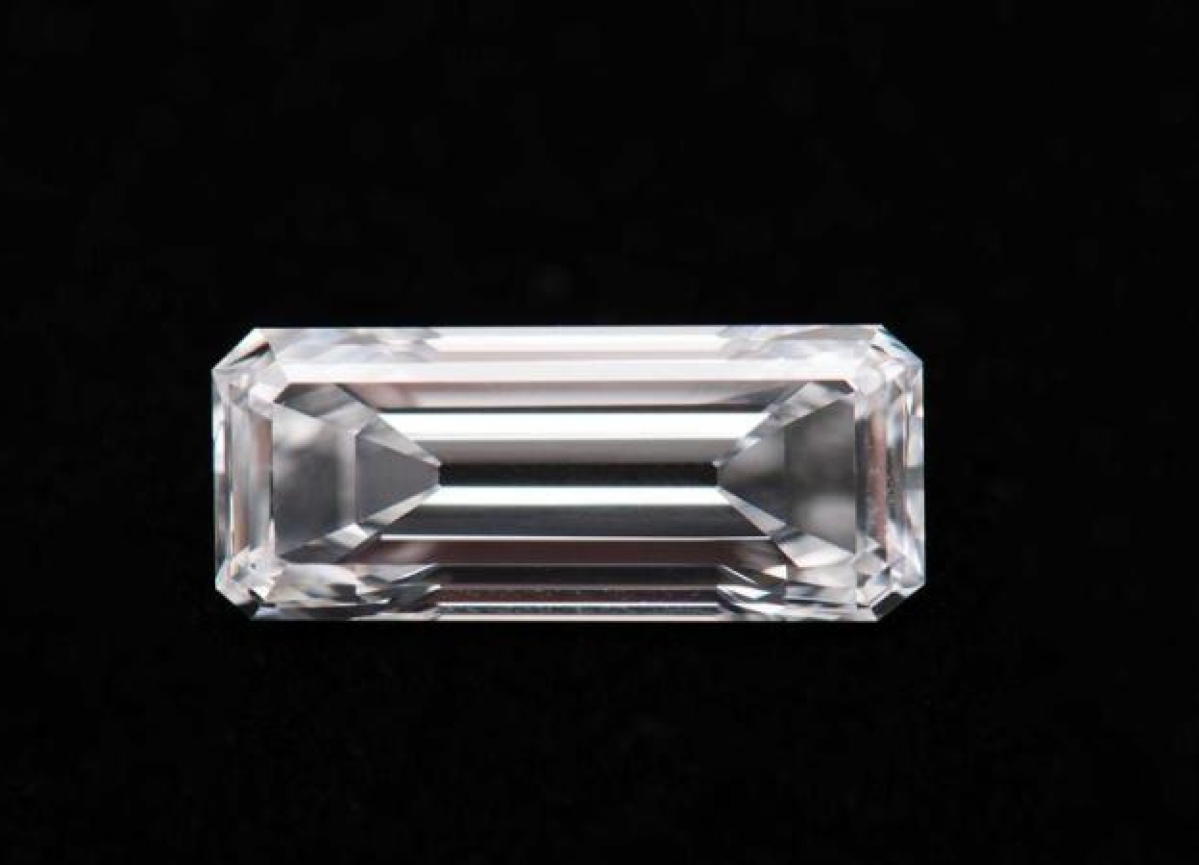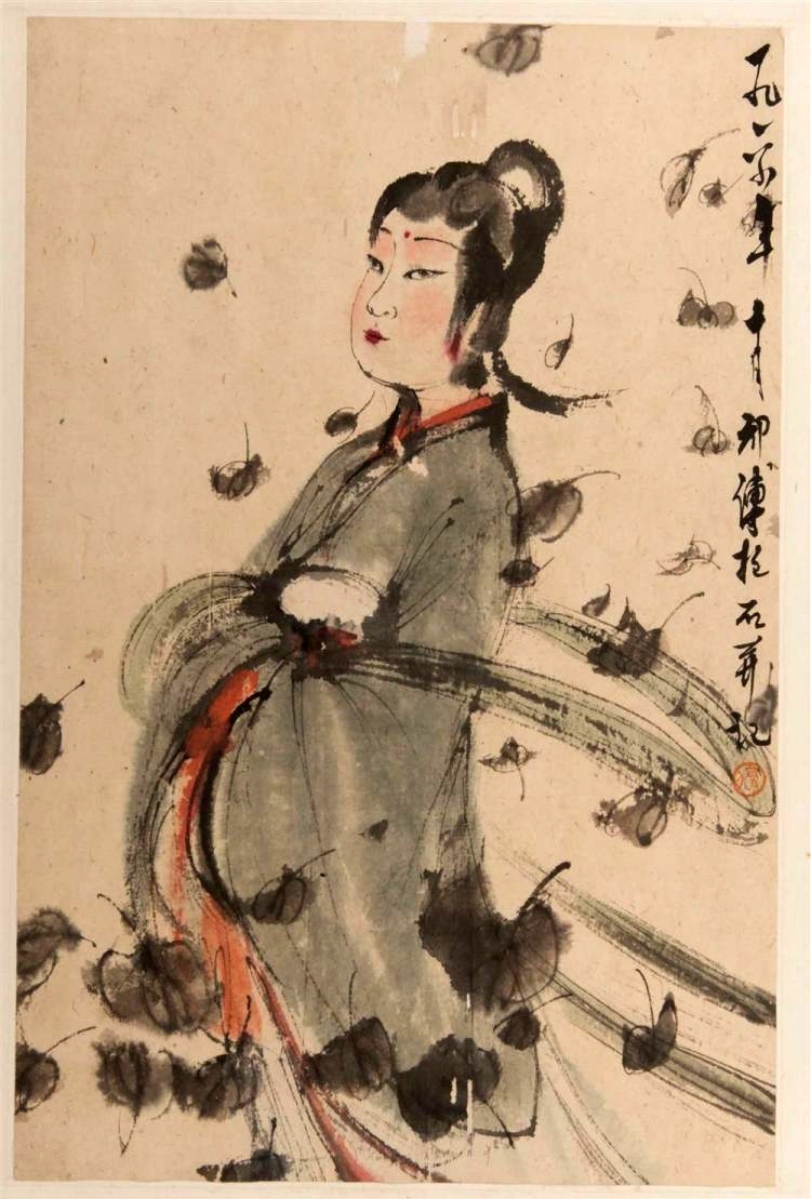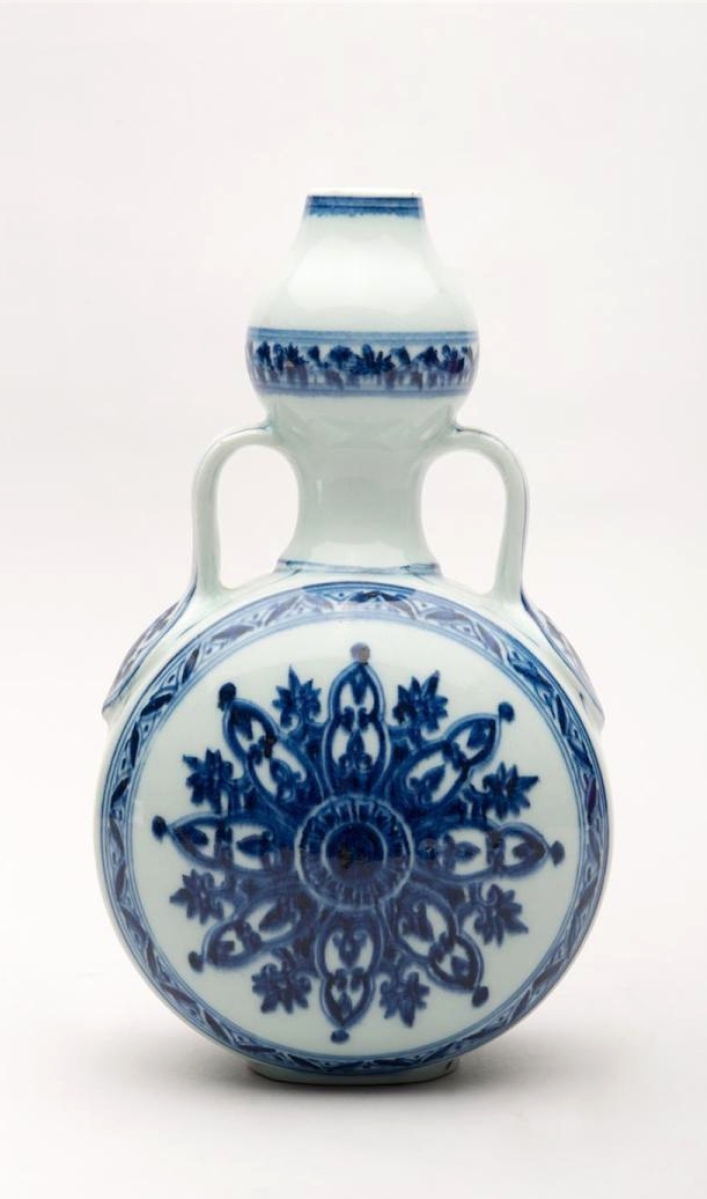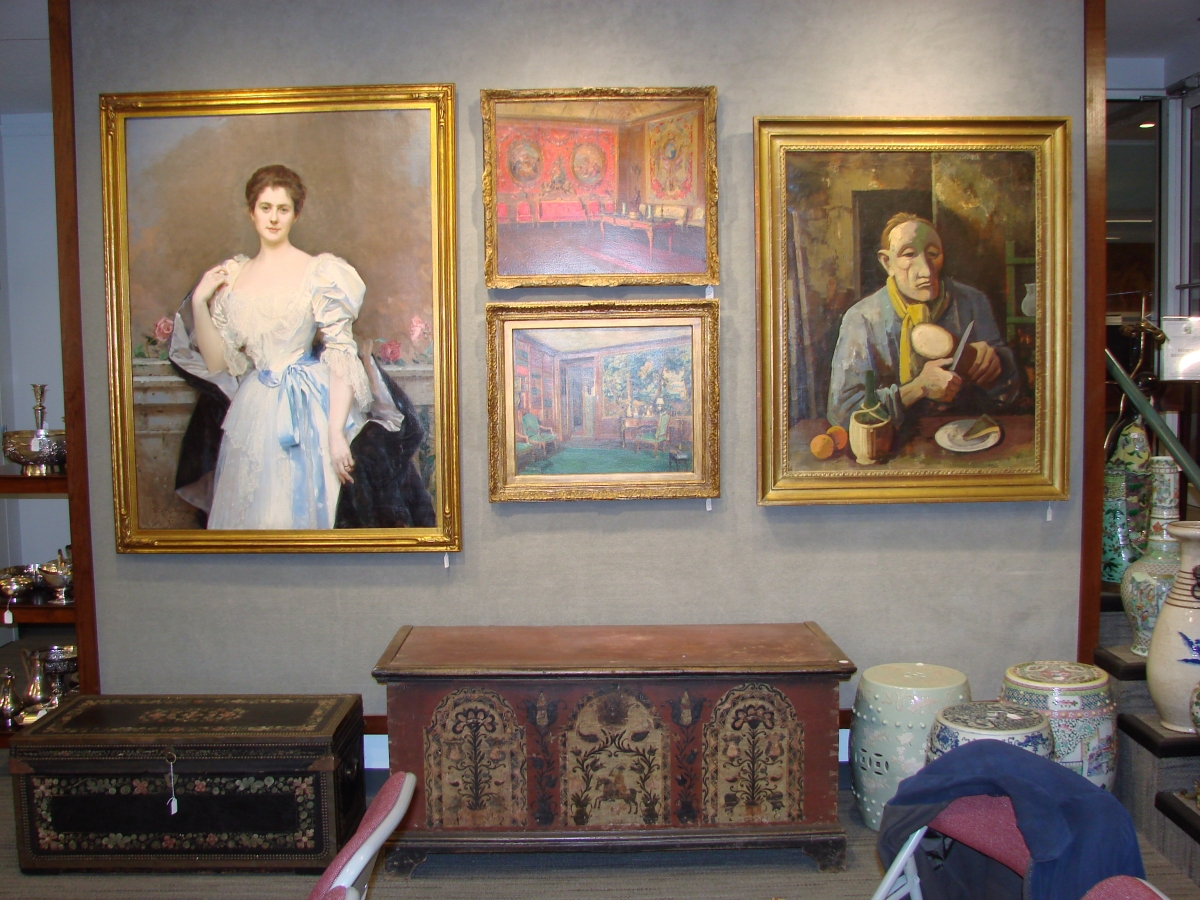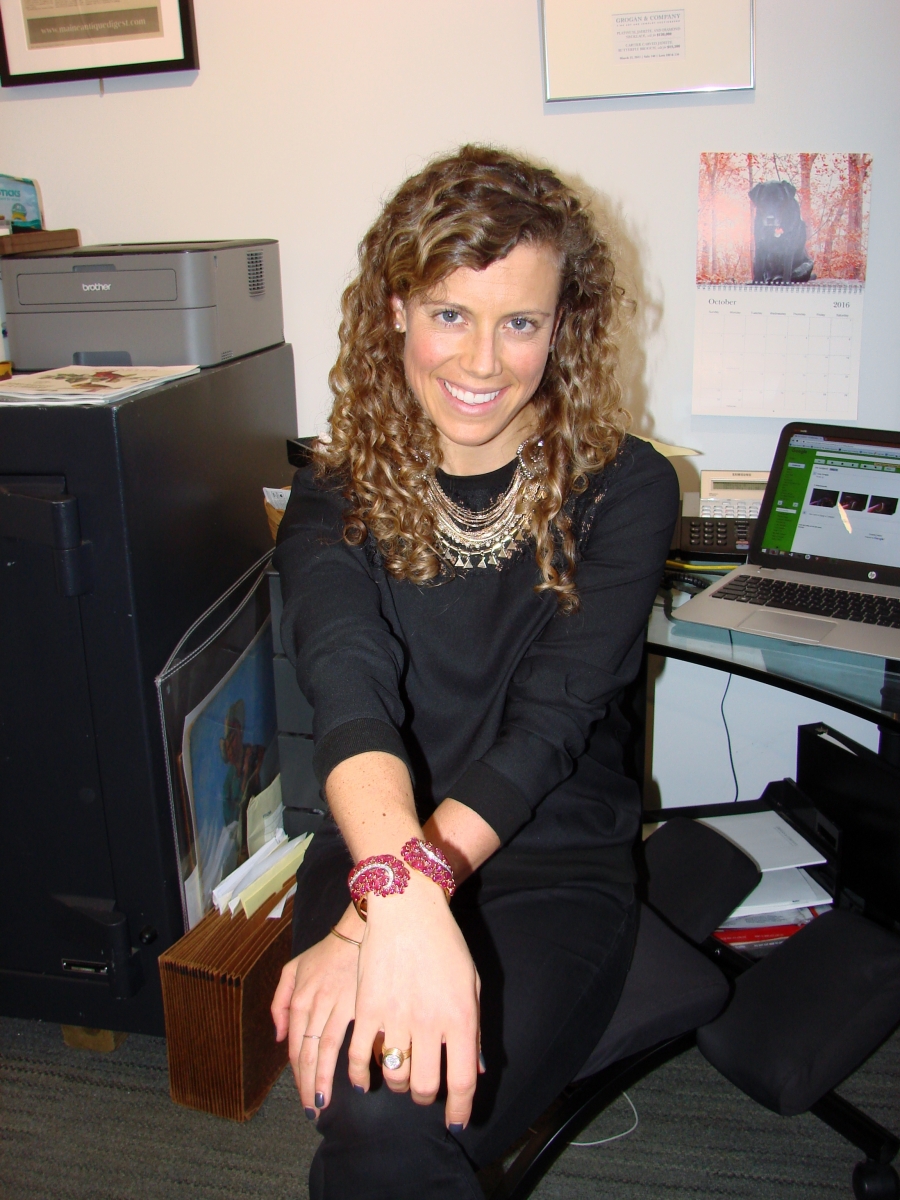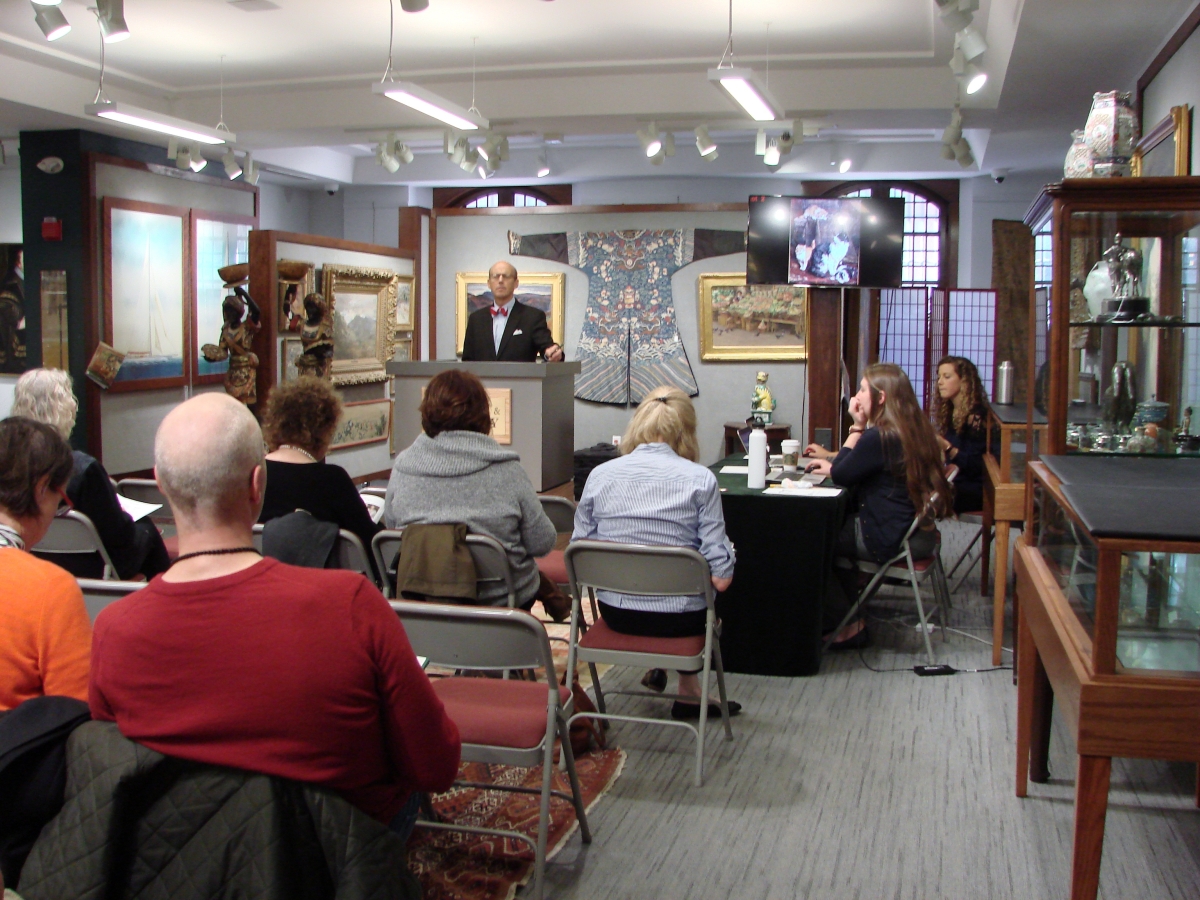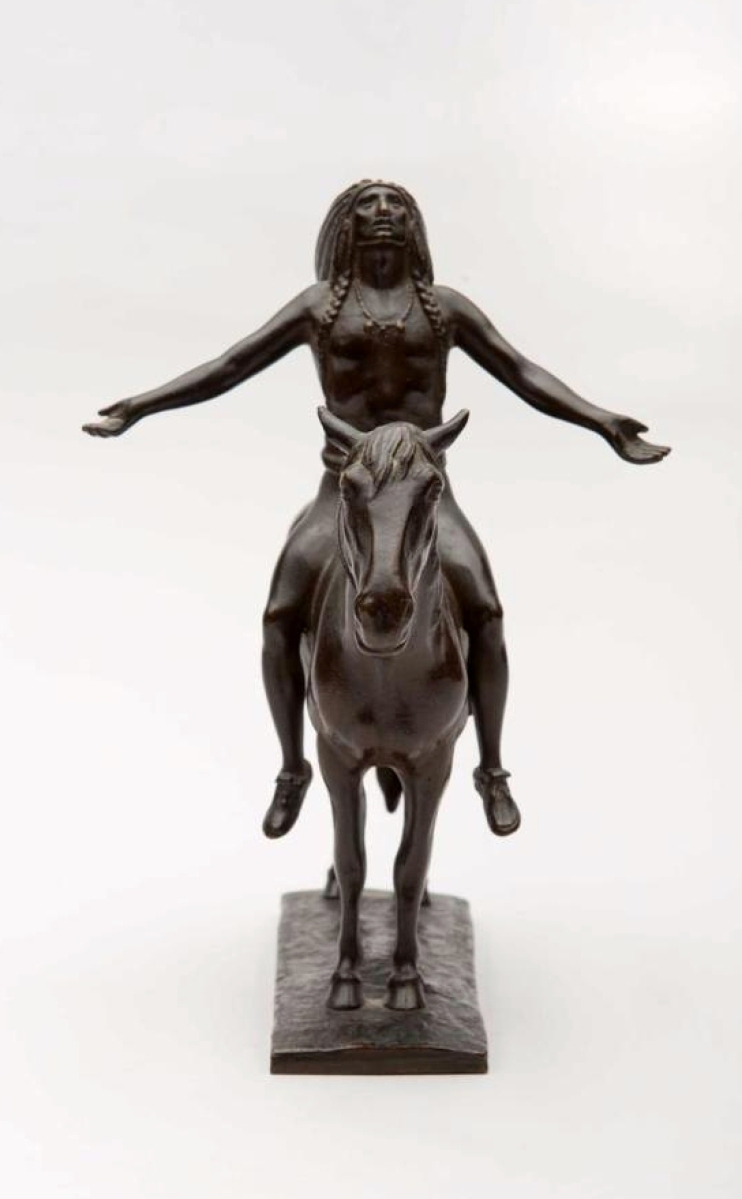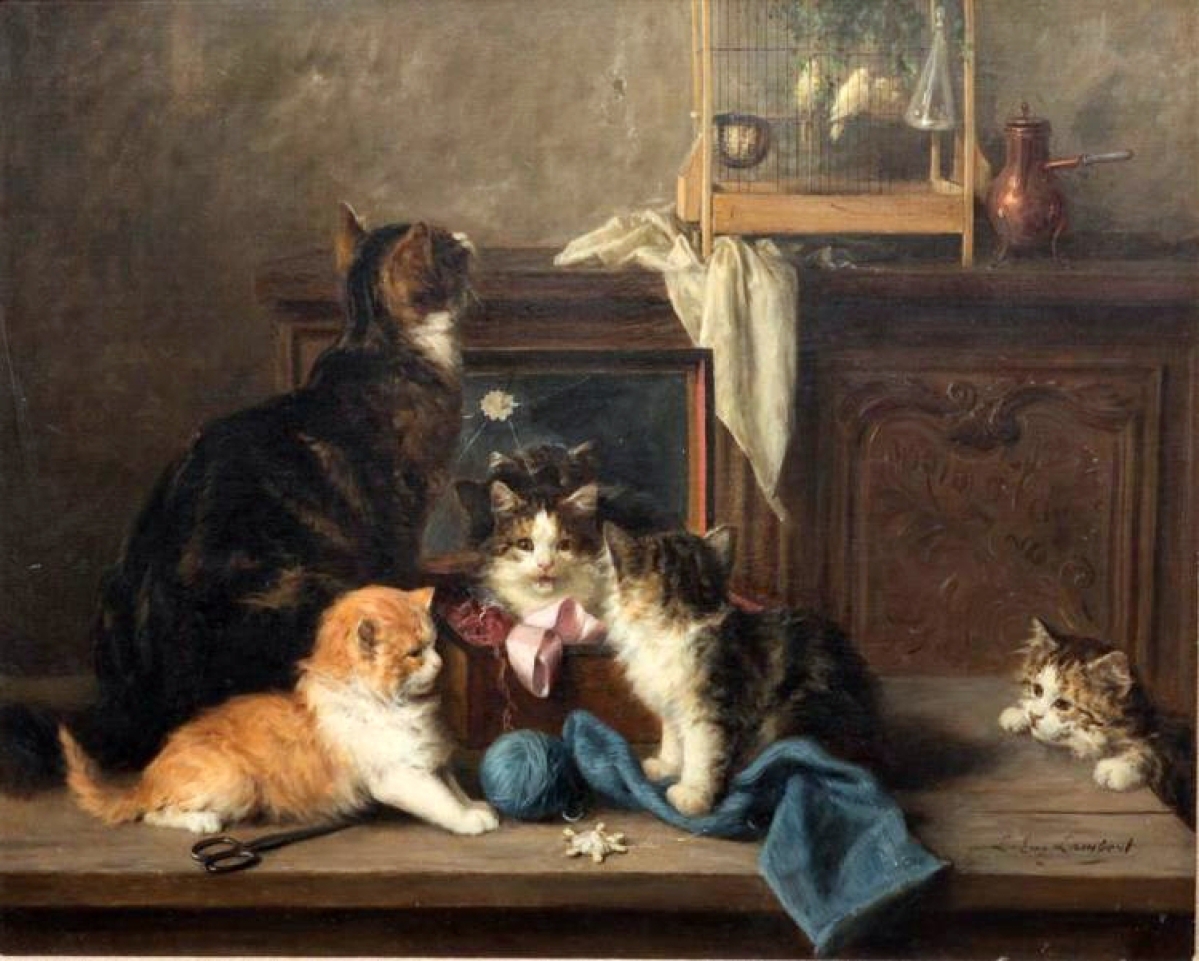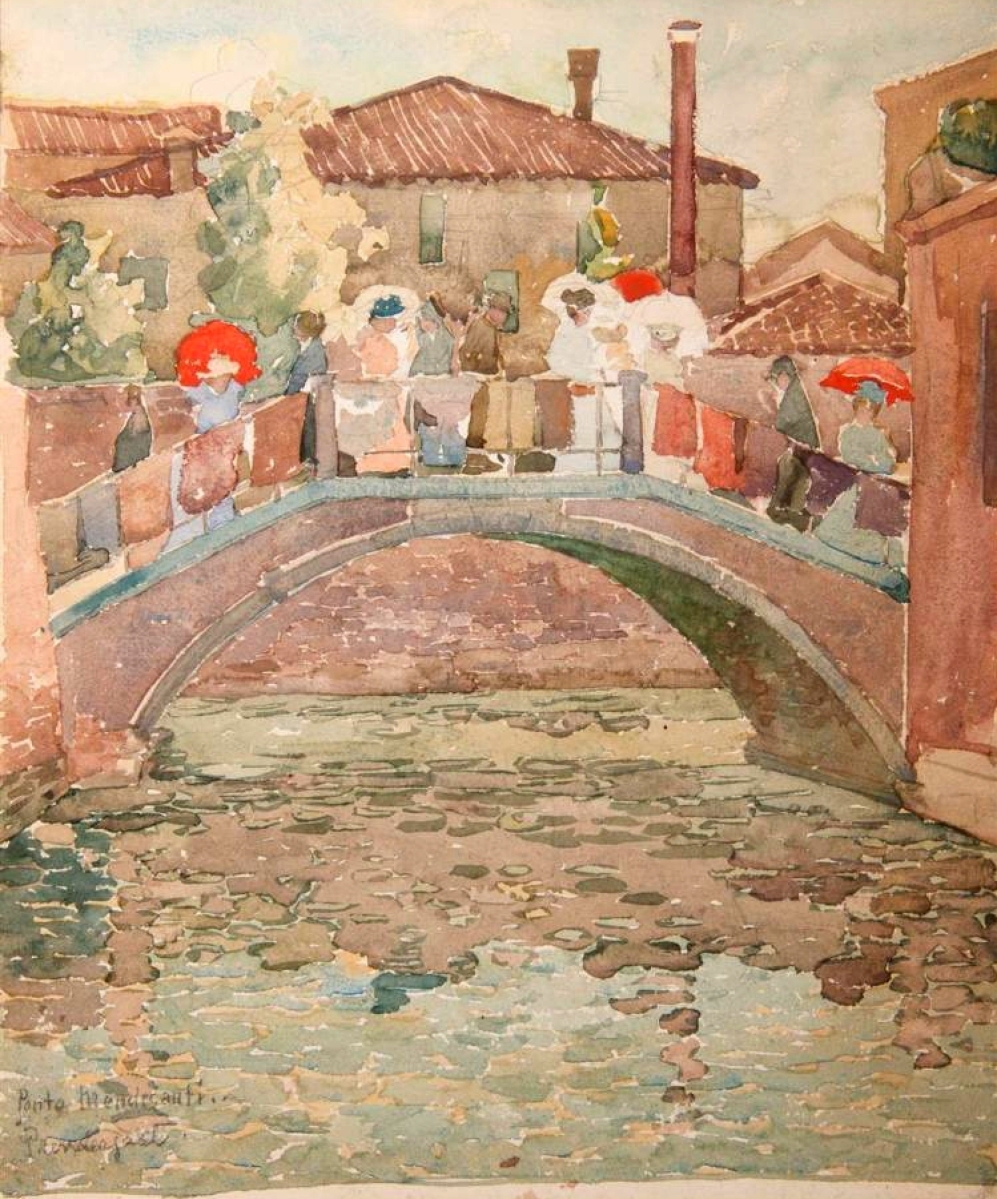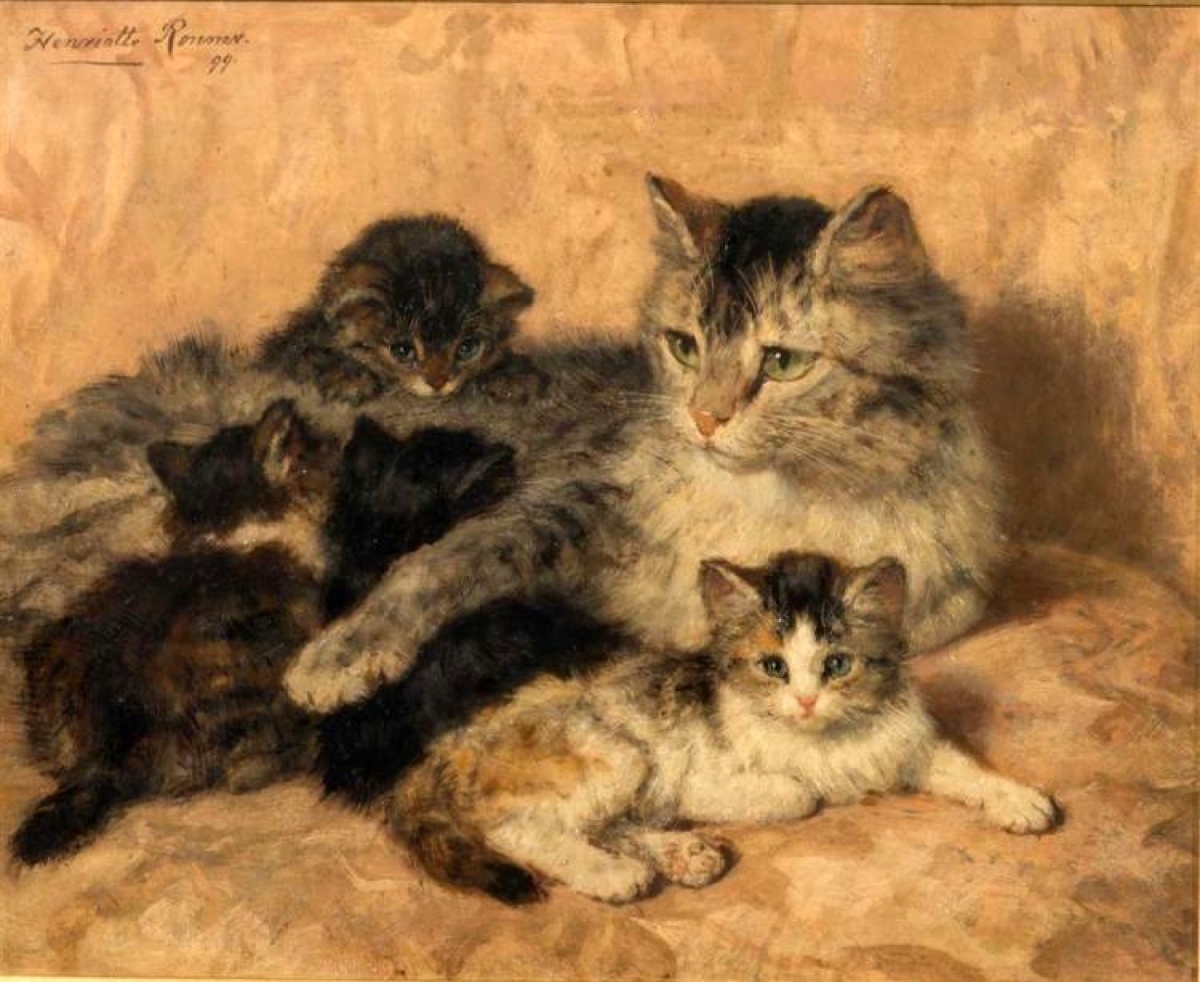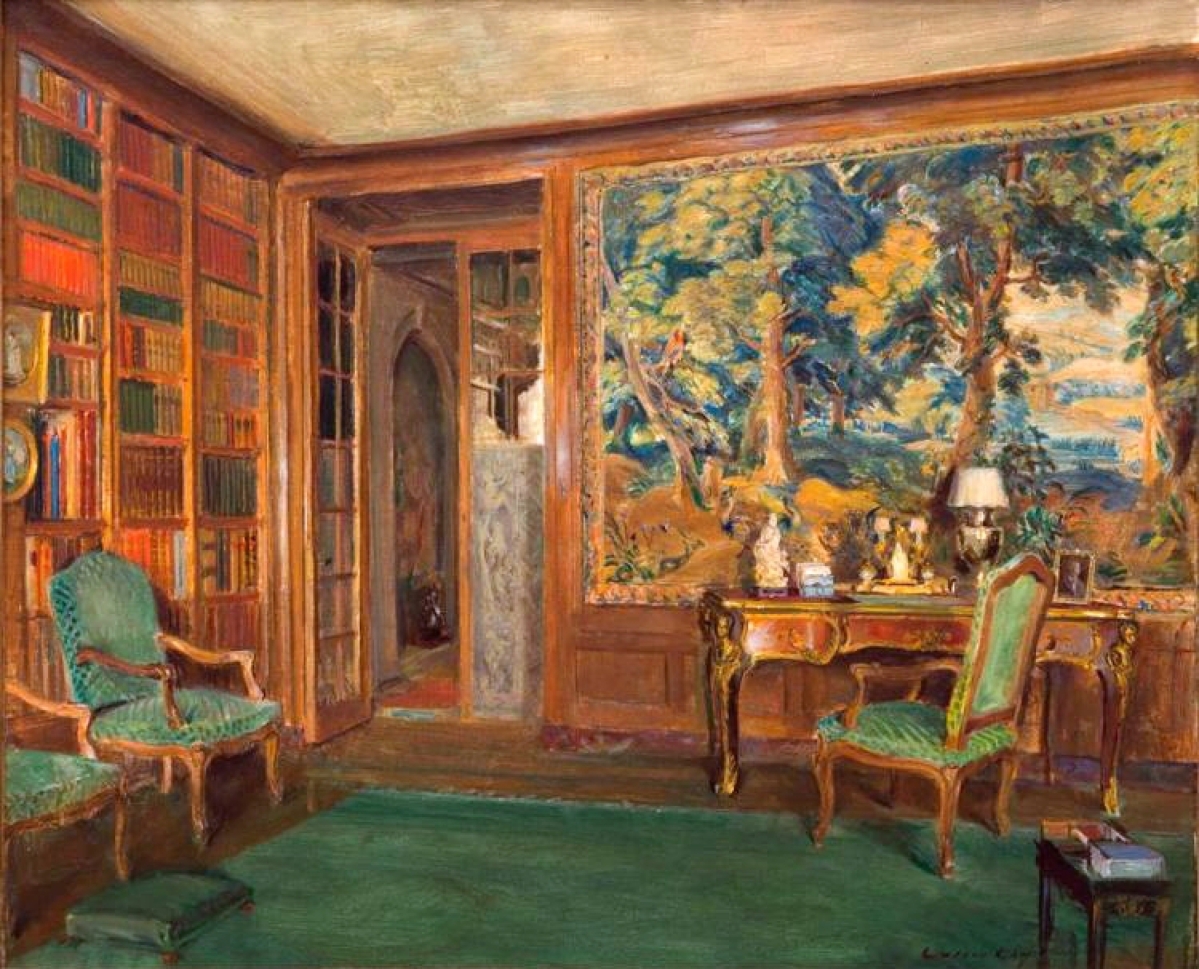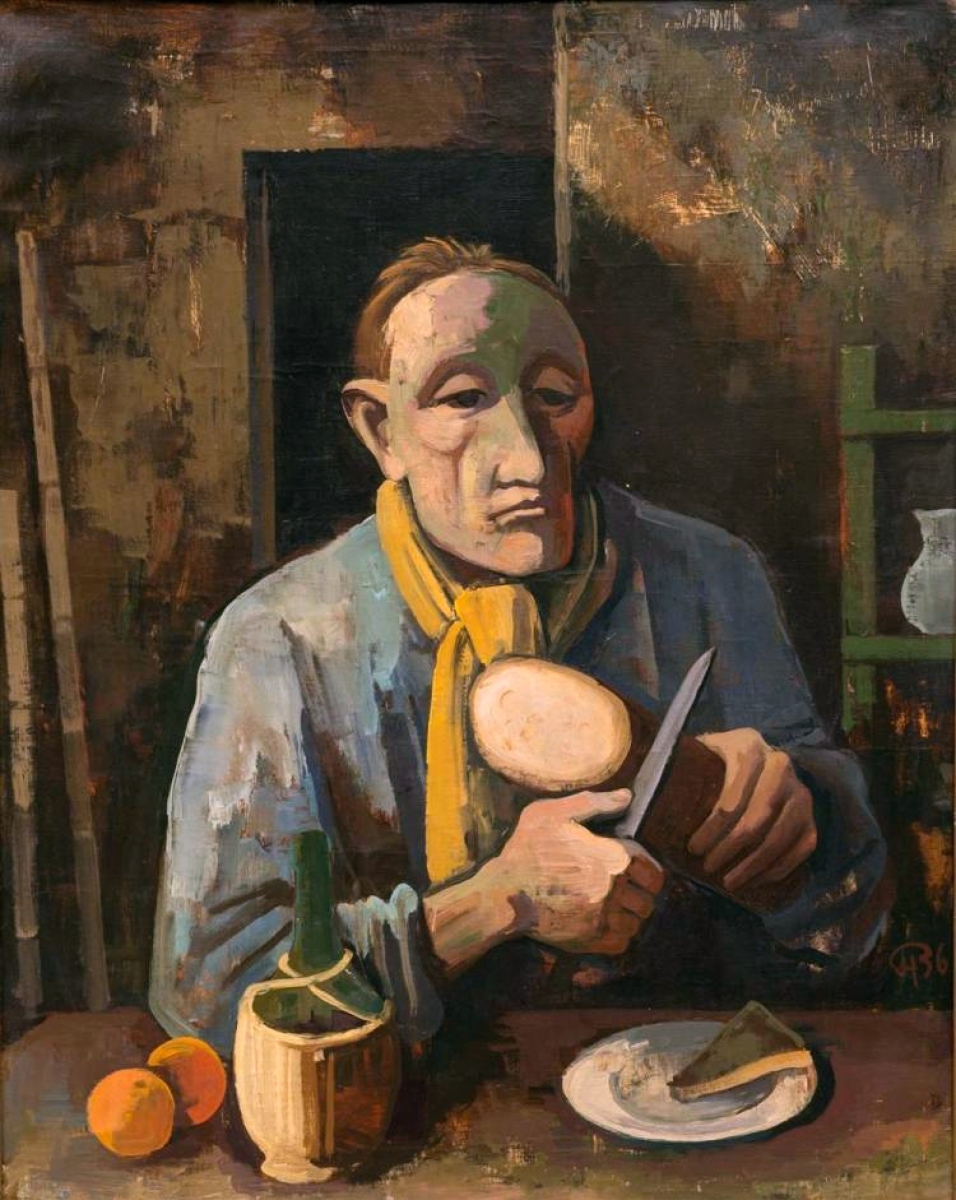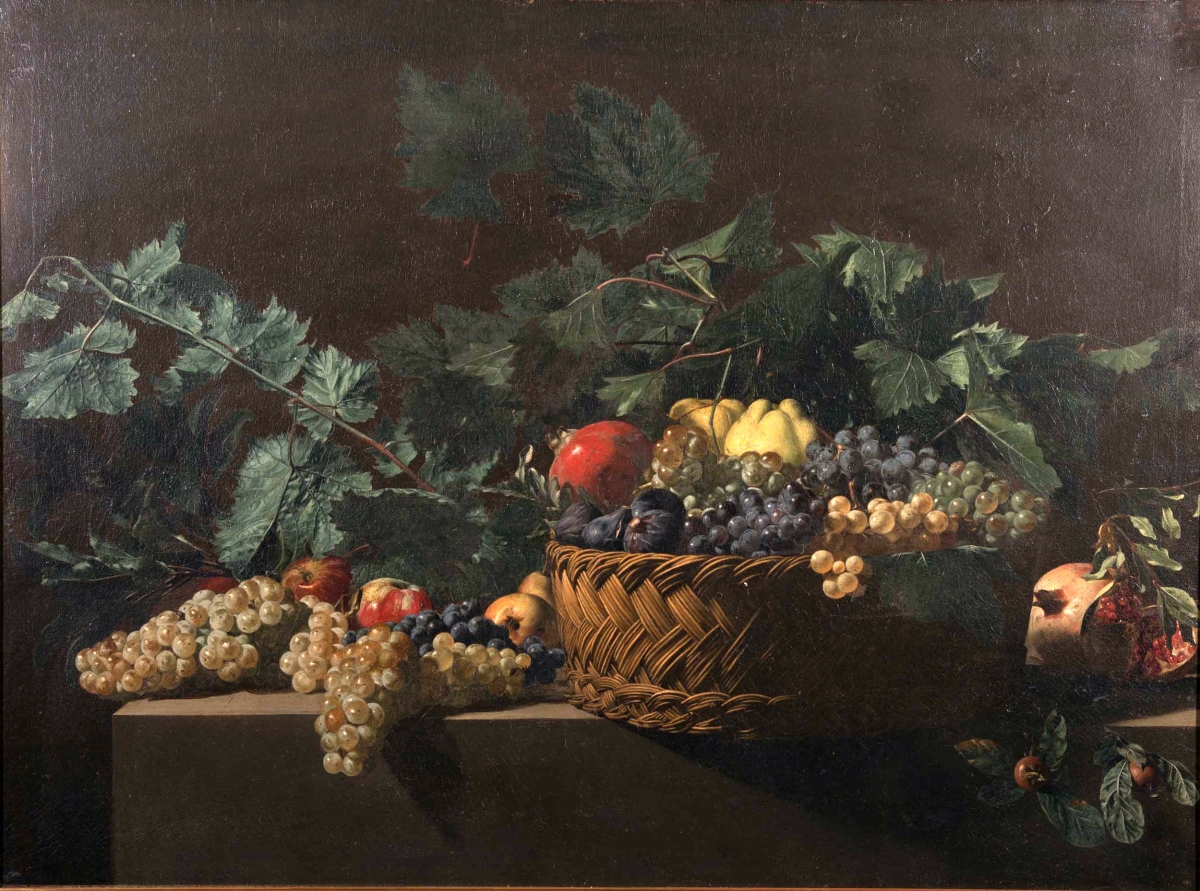BOSTON, MASS. — Grogan & Company had a good two-day sale last month. Paintings, jewelry and decorative arts were sold on the first day, October 23, while Asian material was sold October 27. A still life by Antonio de Pereda (Spanish, 1611–1678) sold for $817,400, setting a new watermark for the auction house as the highest-selling lot it has sold.
The still life was not the only painting to bring more than six figures, as a Carl Hofer (German, 1878–1955) artwork went for $146,400 and others went out over $50,000. The jewelry selection did well, with an unmounted 4.37-carat diamond earning $122,000 that had come in with a group of costume jewelry, but Lucy Grogan, head of Grogan’s jewelry department, recognized its importance. The sale also featured sculpture, silver and Russian enamel, while the second session was devoted to Asian items, including porcelains, bronzes, textiles and paintings. The total for both days was $2,420,000.
When asked during preview if he expected any surprises, Michael Grogan pointed to the still life and said, “There has been serious interest in that still life. Depending on what the experts think, it might go well over $100,000 or it might go for less than $10,000.” The painting had been consigned by a German American family that had acquired it in Germany “way back,” according to Grogan. “I dealt with a third-generation daughter of the family and the money they will get for this painting will really help.”
The painting had been appraised at $15,000, so Grogan cataloged it very conservatively as being in the “manner of Antonio de Pereda” and estimated it accordingly, at a high of $10,000. After the sale, Grogan was asked about the disparity between the catalog estimate and the final selling price. His thoughtful response, “We’re not experts in everything we sell. Our expertise is conducting auctions. We put this painting, and everything else we sell, in front of buyers that we think will be interested. Our job is to bring buyers through the door and we did that. I am delighted that we got what we did for this painting, and I am not at all embarrassed by the low estimate. It is the most expensive item we have ever sold in our almost 30 years in the business and we are all proud of it.” The buyer, who was in the room, but preferred to remain anonymous, said that he believed the painting was by the hand of De Pereda. He left immediately after making his purchase.
Another painting also achieved a six-figure price. An oil on canvas by German Expressionist painter Carl Hofer, “Brot & Wein” went within estimate for $146,400. Hofer was strongly influenced by both Cezanne and El Greco and, according to the catalog, this work showed those influences. German sculptor Waldemar Reemisch purchased the painting from the artist in 1936, and after his death, it was displayed in one of the Harvard Art Museums. Hofer’s works hang in other major museums and few of his later works are in private hands; most are in museums.
Selling for more than twice its estimate was a small watercolor by Maurice Prendergast (American, 1858–1924). It was signed and titled by the artist, “Ponte Mendicanti,” was backed with newspapers dated 1898 and finished at $73,200.
The sale kicked off with a collection of 27 cat paintings that had been assembled by Henrietta and Peter Heydon over a 35-year period. Both were cat lovers and during their 47-year marriage, they adopted nearly 100 cats, naming each for food or drink, such as meatloaf, cappuccino, etc. The first painting they bought, “Cats Playing” by Louis Eugene Lambert, (French, 1828–1900) was included in the sale and brought $3,050. Three phone bidders competed for “The Happy Family” by Henriette Ronner-Knip (Dutch, 1821–1909), and it wound up being the highest priced of the Heydon collection, finishing at $45,750. Others from the collection also sold in the five-figure range. “Cats at Play” by Julius Adam II (German, 1852–1913) brought $17,800, “Kittens Playing Around A Saddle” by Frank Paton (British, 1859–1909) ended up at $13,420 as did another by Ronner-Knip, “Proud Mother.”
A 9-inch-tall bronze, one of an edition of five, by Max Beckmann, (German, 1884–1950), titled “Back Bend,” achieved $48,800. Beckmann lived in Germany and was quite successful, where he was teaching a master class at the Städelschule Academy of Fine Art in Frankfurt. When Hitler came to power, Beckmann’s works were considered degenerate and more than 500 were seized by the Nazis. Beckmann and his wife fled Germany, eventually settling in America, where again he found success. His works are in the collections of the Museum of Modern Art, the Guggenheim, and several other major museums.
Another important bronze that performed well was a 9½-inch version of “Appeal to The Great Spirit by Cyrus Dallin, (American, 1861–1944). It was cast by Gorham in 1913 and was numbered 33. The full-sized, original version of this group is installed outside the main entrance of Boston’s Museum of Fine Arts and won a gold medal at the 1909 Paris Salon. One-third size casts are in several museums, and a smaller version is in the permanent collection of the White House. It is Dallin’s best-known work, and many consider it to be an American icon.
The sale included more than 100 lots of jewelry. Does it pay to deal with experts? You decide. A client who has consigned jewelry in the past brought in a group that she thought was costume jewelry. As Lucy Grogan, head of Grogan’s jewelry department and appraiser, was examining the jewelry, she found a platinum and diamond brooch, with what she considered to be an exceptional emerald-cut diamond. She removed the stone from its setting and sent it for G.I.A. certification, where it was weighed as being 4.37 carats, with a statement grading the diamond color as D (the highest grade), IF (internally flawless), with no fluorescence. She decided not put the stone back in the original setting, believing that its eventual buyer would prefer to have the stone put into a new setting. Grogan said that the “narrow shape of the stone will appeal to certain buyers and it is better off being sold on its own.” She estimated the diamond at $40/60,000 and the stone performed admirably at $122,000. The brooch was sold separately, $1,342.
When Grogan was asked which was her favorite piece of jewelry in the sale, she selected a Boucheron gold, platinum and carved-ruby dangle bracelet. “I like it because it is retro period. The craftsmanship and quality of the stones, especially the carved rubies, is outstanding. It is signed, it was purchased from Boucheron in Paris in 1945, it has French assay marks and it is just got everything going for it.” Others apparently agreed with her assessment, as it sold for more than three times the estimate, attaining $42,700.
Several phone bidders competed with a left bid for a platinum, gold and diamond pendant/brooch. Centering a prong-set old European-cut diamond weighing approximately 3.40 carats within a platinum-topped 14K yellow gold open-work mount with full and single-cut diamonds, with a total carat weight of about 6¼ carats, it went to one of the phone bidders for $24,400. Also doing well at $18,300 was an 18K yellow gold, ruby and diamond covered wristwatch, signed Van Cleef & Arpels. The circa 1949 retro watch featured two roundels with mystery-set caliber-cut rubies flanked by 12 full-cut diamonds. Several pieces of jewelry were from the estate of Mrs F.C. Dumaine Jr and sold to benefit mental health research at McLean Hospital in Belmont. One piece was a custom-made brooch. It was designed by Raymond Yard in New York City, in collaboration with Mrs Dumaine. According to Mrs Dumaine, the gold was obtained by melting her children’s diaper pins. The diamonds and sapphires, she said, were sourced from various family jewelry, including pieces dating back to her great-great-grandmother. The platinum, diamond and sapphire piece went for $7,320.
The sale included a selection of Russian enamel and silver. Leading the group of Russian enamel was a silver-gilt covered bowl, which reached $2,745 and a coffee cup that achieved $2,074. An unusual silver presentation sculpture made in London in 1895 depicted a horse with military officer at its side. It was 12 inches tall and bore a plaque inscribed “Presented to Captain H.M. Johnston, 15th Bengal Lancers Adjutant Surma Valley Light Horse…1895.” Michael Grogan commented that sculptures in silver are not common. It finished at $3,965.
The second session comprised 126 lots of Asian material. Finishing at $73,200, and leading this portion of the sale, was a Chinese blue and white moon flask vase in a fitted box. Buyers in the room took the piece to about $40,000, with the phones and internet taking over from there. It was a phone bidder who was successful. Chinese paintings did well, with a watercolor and ink by Chi-Kwan Chen (Chinese, 1921–2007), titled “The End–The Beginning,” going for $39,650. The artist served in World War II, settling in the United States in 1948. He worked for Bauhaus architect Walter Gropius, and later for I.M. Pei, before returning to China, settling on Taiwan, where he set up the architecture department at Tunghai University. An ink and watercolor painting on silk, depicting a woman, by Fu Baoshi (1904–1965) brought $9,760. About 25 buyers were in the room.
After the sale, Michael Grogan said, “Two million dollar sales are good for us. We are feeling good about this one. We had strong participation in all categories and we brought in the buyers.”
All prices include the buyer’s premium.
For additional information, or 617-720-2020.
This Tiffany Studios “Volcano” humidor in patinated bronze earned $8,540.
Selling for $48,800, Max Beckmann’s bronze figure, “Back Bend” was produced in 1950 in an edition of five.
A. five-piece Tiffany & Co silver coffee and tea service, with over 93 ounces of silver, achieved $5,185.
Of the group of Russian enamel, this covered bowl brought the highest price, $2,745.
Multiple phone bidders competed with a buyer in the room for this Roman gold coin from the Vespasian period, 69-79 CE. The buyer in the room held on, paying $10,980 for the coin.
A client brought in a group of jewelry that she believed to be costume jewelry. Lucy Grogan, head of Grogan’s jewelry department realized that at least one piece was far from being “just costume jewelry.” She removed the diamond from its setting, sent it for G.I.A. certification, which determined that it weighed 4.37 carats, and they graded the diamond as D, IF, with no fluorescence. It sold for $122,000.
Artwork did well at the Asian part of the sale. An ink and watercolor painting on silk, depicting a woman, by Fu Baoshi earned $9,760.
Cataloged simply as a Chinese blue and white moon flask vase, with a high estimate of $6,000, it drew the most spirited bidding of the Asian material, finishing at $73,200.
Not all paintings at Grogan bring four- or five-figure prices. Many can be bought for less than $1,000, as was this double-sided watercolor, “Two Women by The Sea” by John William Casilear, an artist well known as a member of the Hudson River school. It realized $854.
Paintings and other objects on display prior to the sale.
Lucy Grogan wears her favorite piece of jewelry in the sale, a diamond and carved ruby bangle bracelet by Boucheron set in gold and platinum, signed and dated to about 1945. “It’s got everything going for it.” Bidders agreed and the piece earned $42,700.
Michael Grogan gets the sale started. Internet bidding is handled from the desk on the right.
A 9½-inch version of one of America’s most iconic bronze sculptures of Native Americans, “Appeal to the Great Spirit” by Cyrus Dallin, earned $7,320. A full-size version figure is installed outside the main entrance of Boston’s Museum of Fine Arts. One-third-sized versions are in several museums, and a version is in the White House.
Twenty-seven paintings of cats from the collection of Henrietta and Peter Heydon began the sale. “Cats Playing” by Louis Eugene Lambert was the first painting they bought about 35 years ago, and it sold for $3,050.
Maurice Pendergast’s watercolor, “Ponte Mendicanti,” more than doubled the estimate to finish at $73,200.
“The Happy Family,” by Henriette Ronner-Knip, brought the highest price of the cat paintings, bringing $45,750.
Mrs Oliver Gould Jennings commissioned Walter Gay (American, 1856–1937) to paint her portrait and the library of her Fifth Avenue townhouse in New York. The painting of the library with its paneled walls and French furniture achieved $30,500.
Carl Hofer’s “Brot & Wein,” a 1936 oil on canvas, reached $146,400. Hofer fled Germany when Hitler came to power, eventually returning to Germany. His works hang in several major museums.
Conservatively cataloged as in “the manner of” Antonio de Pereda, bidders decided that the still life was actually by the artist’s hand. Prior to the sale, Michael Grogan said there had been a lot of interest in the painting. It ended up selling for $817,400 to a bidder in the room, who competed with several phone bidders. It was the highest priced item ever sold by Grogan and Co.

